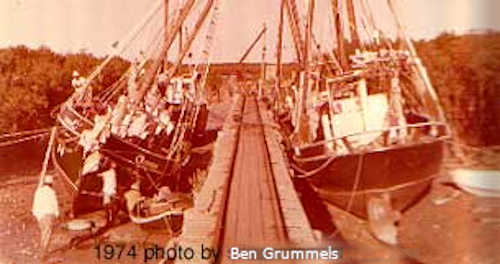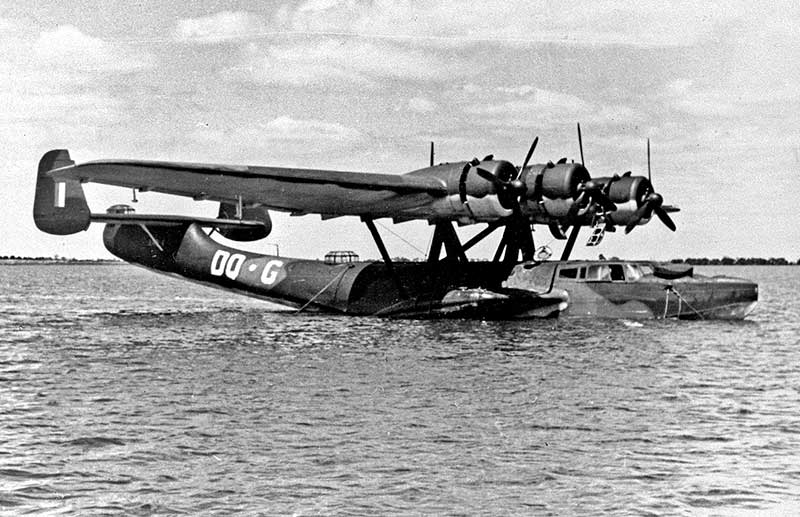
Photo of Dugong feeding near Broome
The local indigenous
people, the Yawuru, have lived in
the area for many hundreds (some say thousands) of years. There is also
evidence that people sailed all the way from Malaya and Indonesia in search
of turtles,
dugong and pearls.

Photo of Dugong feeding near Broome
William Dampier was the first European to visit the Broome area in 1688 and Roebuck Bay was named after his ship the HMS Roebuck. But it wasn't until almost 200 years later that Broome was officially recognised and named after the then Governor of Western Australia, Sir Frederick Napier Broome..
It was the discovery of the world's largest pearl oyster (Pinctada maxima - producer of the White South Sea and Golden South Sea Pearls) that saw the beginings of the industry that has, over the years, made Broome famous - pearling!
In the 1910's Broome producted over 80% of the world's Mother of Pearl shell used in the production of a wide array of decorative items from buttons, furniture and jewellry. It was in 1913 that the local pearling fleet (examples of which can still be seen in Broome) reached it's peak of over 400 vessels.

The industry was very profitable for the ships captains but the divers faced real dangers from sharks, sea snakes (the most venemous in the world), cyclones (submerged divers were cut adrift if one appeared over the horizon to allow the vessel to run for safety), drowning when equipment broke or was faulty and the 'bends' (an agonising death).
The invention of the plastic button in the 1950's saw the rapid decline of the Mother of Pearl industry. However, in the late 50's the industry started a recovery as the cultured pearling industry took off. By the 70's Broome could again boast that it was the centre of the world's pearling industry meeting over 70% of the world's demand.

History of Broome with historical photos of Dutch seaplane at Broome.
See the picture of my uncle
Ben Grummels
Sr's B25.
In the 80's another industry started to impact upon Broome and this time it was people - tourists in fact. These days Broome hosts over 100,000 tourists a year and the numbers continue to rise as new resorts are built and older hotels refurbished. The real changes started when the road between Port Hedland and Broome was finally sealed allowing people to drive all the way in relative safety and comfort.
In 2020 the Corona
virus pandemic hit the Broome tourist industry, however domestic tourism
pickup in 2021, especially when the Western Australian and Australian
governments subsidised cheap airfares to Broome.
Broome's Cable
Beach is one of the most famous beaches in the world and the pindan
cliffs (soils this time rather than the vegetation. See above), stark white
sands and clear bblue waters of the Indian Ocean are part of this exotic
towns appeal. Chinatown boasts an unusual style all of it's own which is
a blend of Australian Colonial/Asian developed in the early days of the
settlement and still surviving today.